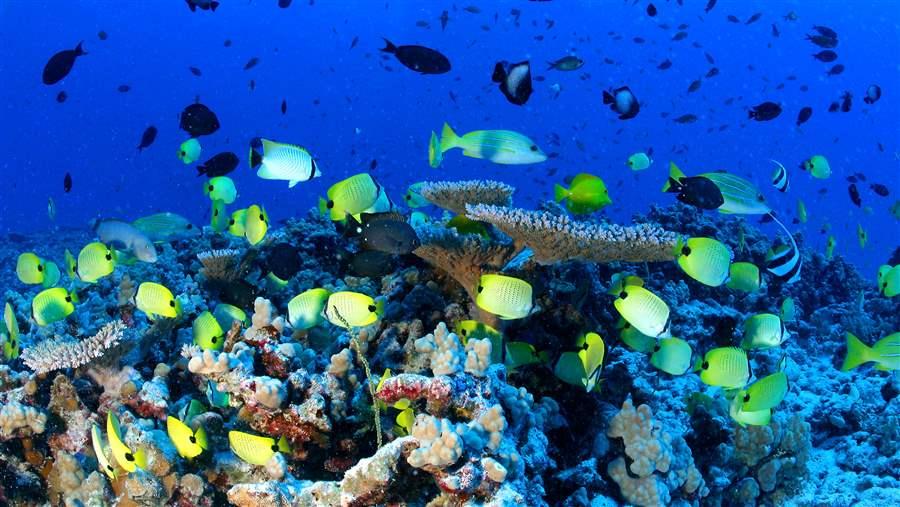How Much of the Ocean Is Really Protected in 2020?
Despite progress, the global community must do more to boost ocean health, paper shows

Our planet is home to wonderfully diverse natural habitats that support a huge range of life. But many of those places—and the species that rely on them—are under threat. Sufficiently protecting them requires a broad, multinational effort, which is why bodies such as the United Nations set conservation targets. While governments around the world have safeguarded large areas of land, most have been slower to create protected areas in the ocean. Two key targets for ocean protection—United Nations Sustainable Development Goal 14 and the Convention on Biological Diversity’s Aichi Target 11—seek to effectively protect at least 10 percent of the ocean by 2020. So how are we doing against these targets? The answer is not so clear.
According to the U.N.’s World Database on Protected Areas, which records marine protected areas (MPAs) submitted by countries, more than 15,000 MPAs protect more than 27 million square kilometers (almost 10.6 million square miles) of ocean. In other words, nearly 7.5 percent of the ocean, an area the size of North America, is under some kind of protection.
But how accurate are these figures? And how protected are those areas? “MPA” has become a catch-all term for the many forms of management applied to the ocean, but it means different things to different people. The classification system developed by the International Union for Conservation of Nature (IUCN), which is also the most widely used, allows a broad scope of activities to occur within areas categorized as MPAs. For example, that can include areas where visitation is restricted or, places that allow sustainable resource use by indigenous peoples, as well as zones that allow commercial fishing. Some governments even allow mining and industrial fishing in MPAs, although these activities would not meet the IUCN standard. Ultimately, fully protected areas, where no extractive or destructive activities are allowed, and highly or strongly protected areas, where only light extractive activities are allowed, will result in greater conservation outcomes.
A more conservative assessment of the global picture, by the Marine Conservation Institute and its Atlas of Marine Protection, shows about 5 percent of the ocean managed in true MPAs.
The difference between the two figures is likely due to a broad interpretation of what constitutes an MPA and a lack of nuance within progress reports submitted to the World Database on Protected Areas—factors which suggest that the Atlas of Marine Protection may be more accurate.
And in fact, that’s what several colleagues and I, along with expert co-authors, found when we explored the differences between the two numbers. In February 2018, we presented and discussed those findings in a paper, “Recommendations to IUCN to Improve Marine Protected Area Classification and Reporting.”
This paper evaluates global targets and MPA definitions, reflects on progress, and highlights key recommendations for improving the application of the IUCN categories for MPAs and strengthening the IUCN’s existing framework. We argue that this, together with improved reporting standards, is essential to understanding, evaluating, and effectively communicating the ecological benefits of MPAs.
We also make the case, supported by numerous studies, that highly protected MPAs are best for the health of the ocean and the most effective means of achieving global conservation targets set by the international community.
With 2020 fast approaching, governments around the world should step up and create large MPAs with strong safeguards. Meeting the 10 percent target, and working toward achieving the IUCN recommendation of protecting at least 30% of the ocean by 2030, would be good news for the many species, including ours, that rely on a healthy ocean.
Johnny Briggs works on The Pew Bertarelli Ocean Legacy Project’s efforts in the U.K., based in London.







